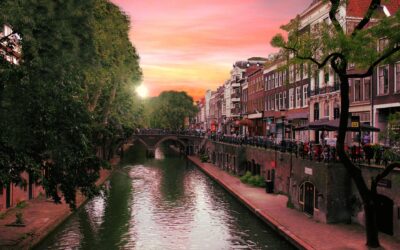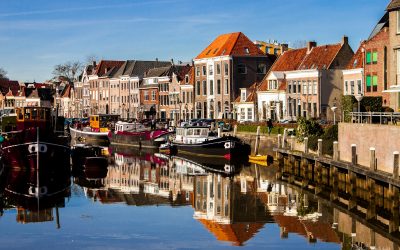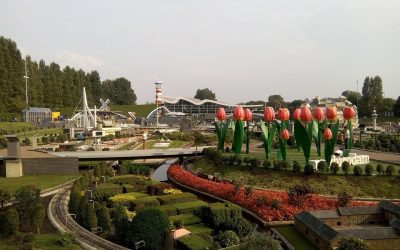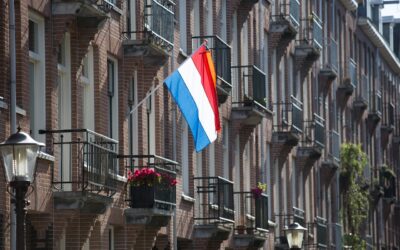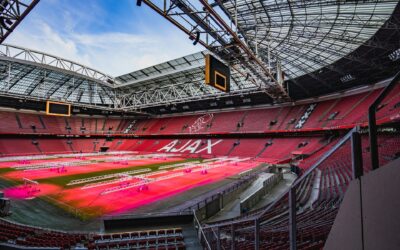Blijdorp Zoo is one of my favorite zoos to visit in the Netherlands. Easily reachable by walking from trainstation Rotterdam Central.
An introduction about visiting Blijdorp Zoo in Rotterdam
A visit to Blijdorp Zoo in Rotterdam promises an unforgettable adventure, filled with fascinating animals, lush landscapes, and exciting exhibits. Known as one of Europe’s oldest and most beautiful zoos, Blijdorp is home to a diverse collection of wildlife from around the globe, including majestic elephants, playful penguins, and rare species like the endangered red panda.
It is a well-known zoo in the country, because of the incident with gorilla ‘Bokito’ in 2007.
With its carefully designed habitats and immersive experiences, Blijdorp offers something for all ages, making it a perfect day out for families, nature lovers, and curious explorers alike. Located just minutes from Rotterdam’s city center, Blijdorp is a must-visit attraction that brings the wonders of the animal kingdom to life right in the heart of the Netherlands.
How to reach Blijdorp Zoo by car or by public transportation
Reaching Blijdorp Zoo in Rotterdam is convenient whether you’re traveling by car or using public transportation. If you’re driving, Blijdorp is easily accessible from major highways around Rotterdam, including the A13 and A20. Simply follow signs for “Diergaarde Blijdorp” as you approach Rotterdam, and once you’re nearby, you’ll see clear directional signs guiding you to the zoo’s main entrance. There’s ample parking available on-site for a small fee, and the parking area is located within walking distance to the zoo entrance, making it hassle-free for families and groups.
For those opting for public transportation, Blijdorp Zoo is well-connected by Rotterdam’s extensive transit network. From Rotterdam Central Station, you can take bus line 33 directly towards Blijdorp; the bus stop for the zoo is “Blijdorpplein,” just a short walk from the main entrance. Alternatively, tram line 25 also stops close to the zoo, at “Van Aerssenlaan,” allowing easy access to the zoo’s entrance within a few minutes on foot. For those who enjoy a scenic route, it’s even possible to walk to Blijdorp from Rotterdam Central Station in around 20 minutes, following signs that lead you through some of the city’s green spaces. This flexibility makes Blijdorp accessible and convenient for visitors, whether coming from within Rotterdam or neighboring cities.
From a zoo towards an organisation for the recovery nature
Blijdorp Zoo is deeply committed to the recovery and conservation of nature, playing a significant role in protecting endangered species through research, education, and global partnerships. The zoo actively participates in breeding programs for at-risk animals, such as the Sumatran tiger and the red panda, helping to preserve genetic diversity and sustain populations that are threatened in the wild. Through extensive research, Blijdorp’s team of experts studies animal behavior, genetics, and habitat needs to better understand and support vulnerable species.
Education is a core part of Blijdorp’s mission, as the zoo provides interactive programs for visitors of all ages, raising awareness about environmental issues and inspiring action for conservation. Moreover, Blijdorp collaborates with conservation organizations worldwide, sharing knowledge and resources to make a broader impact on species survival and habitat preservation beyond the zoo’s walls. This dedication to ecological recovery makes Blijdorp a leading example in the field of wildlife conservation, demonstrating the importance of working together to protect the planet’s biodiversity.
Animals and Plants
Blijdorp Zoo in Rotterdam offers a remarkable journey through the world’s diverse ecosystems, showcasing an extensive variety of animals and plants that bring the beauty of nature to life. As one of Europe’s most celebrated zoos, Blijdorp is home to thousands of animals, representing species from every corner of the globe. From the fierce majesty of Sumatran tigers and Asiatic lions to the playfulness of meerkats and otters, each exhibit highlights the unique characteristics and conservation needs of these incredible creatures. In the Oceanium, visitors can marvel at vibrant marine life, including sharks, sea turtles, and colorful coral reefs, while the Amazonica section immerses guests in a tropical rainforest environment brimming with exotic butterflies, anacondas, and poison dart frogs. Not to be missed, the African Savannah brings visitors face-to-face with giraffes, zebras, and white rhinoceroses, providing an up-close look at some of Africa’s most iconic species.
In addition to animals, Blijdorp Zoo also features an impressive array of plant life that enhances each habitat’s authenticity and educates visitors about global biodiversity. The lush botanical gardens are thoughtfully curated with rare and native plants, from towering bamboo in the Asian section to resilient succulents and cacti in the Desert exhibit, illustrating the incredible adaptability of flora across various climates. The zoo also has a dedicated conservation garden where endangered plants are carefully cultivated and studied, further supporting Blijdorp’s mission of protecting biodiversity. Each area of the zoo is meticulously landscaped to resemble the animals’ natural habitats, providing a unique sensory experience where visitors can feel fully immersed in nature. From towering trees and sprawling savannah grasses to delicate orchids and vibrant flowers, Blijdorp Zoo offers an extraordinary experience that celebrates and conserves the intricate connections between all living things.
Back in the day when Bokito became Worldwide News
In 2007, Blijdorp Zoo became the focus of international headlines when Bokito, a 400-pound silverback gorilla, escaped from his enclosure in a dramatic and unexpected incident. Known to visitors as a charismatic and imposing figure, Bokito managed to breach the moat surrounding his habitat, which was thought to be a reliable barrier preventing any escape. In a startling turn of events, Bokito leapt across the water, climbing over the barrier and entering a crowded restaurant area. The event escalated as Bokito attacked a visitor who had reportedly maintained intense eye contact with him during multiple visits—a behavior perceived as a threat by gorillas. She sustained serious injuries, though fortunately survived the encounter, while others nearby were left shaken by the chaos. The incident raised questions about enclosure security standards and visitor behavior around powerful, territorial animals.
Following Bokito’s escape, Blijdorp Zoo reinforced their safety protocols and redesigned enclosures to prevent future incidents. Interestingly, the event had such a profound cultural impact that “Bokitoproof” became a popular term in the Dutch language, symbolizing a heightened level of security or robustness—whether describing a physical structure or even metaphorical strength. It became ‘word of the year’ in 2007. The word is still used today to refer to measures or structures that are especially strong or secure, reflecting both the fear and fascination surrounding the escape. While Bokito’s escape was a serious incident, it led to increased awareness of animal behavior and the importance of respectful observation in zoos, as well as improvements in animal enclosure design that benefit both animals and visitors. Bokito passed away in 2023. He remained a well-known figure in the Netherlands, his name synonymous with resilience and, in a way, a reminder of the wild instincts that even the most seemingly familiar zoo animals retain.



